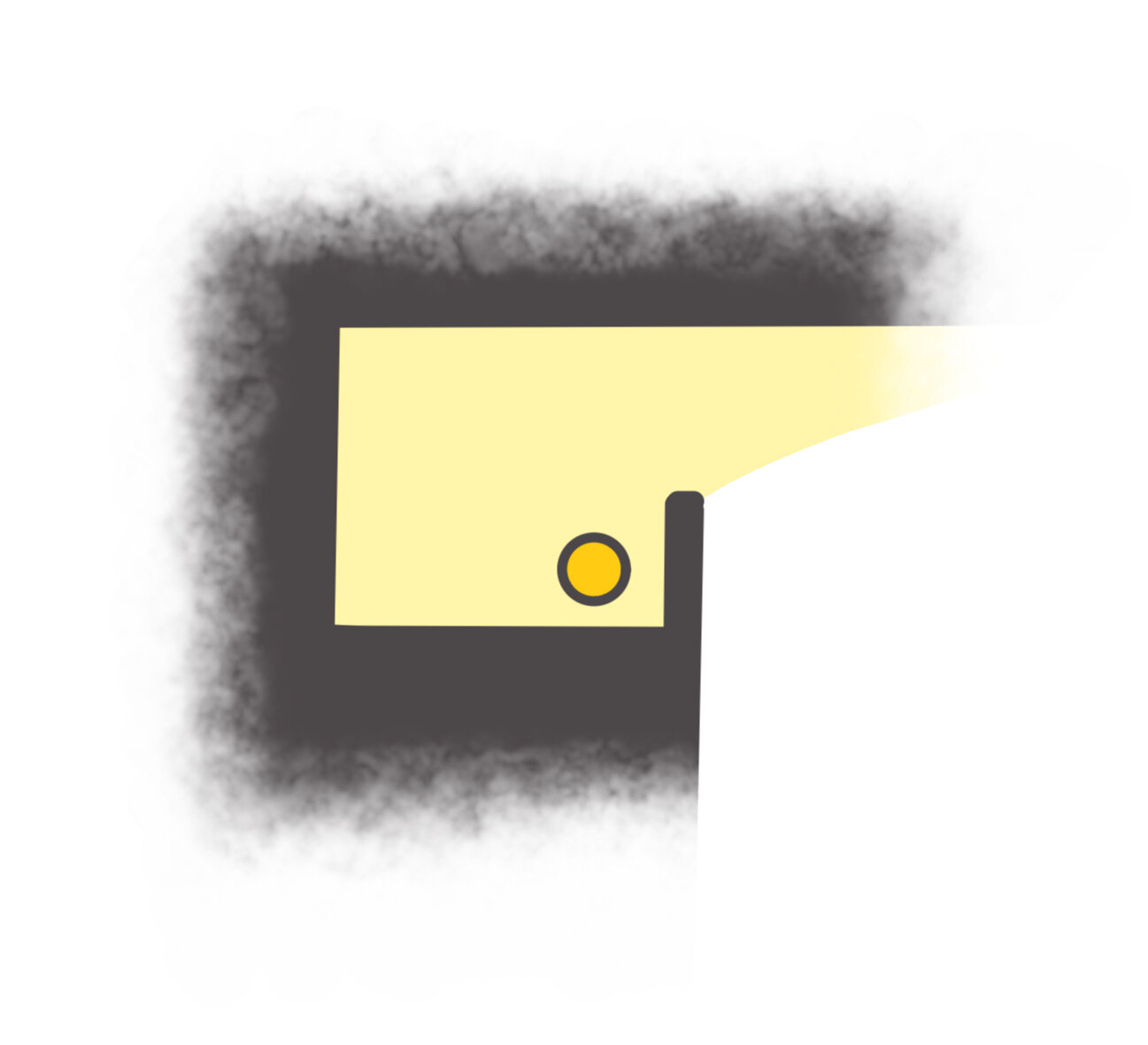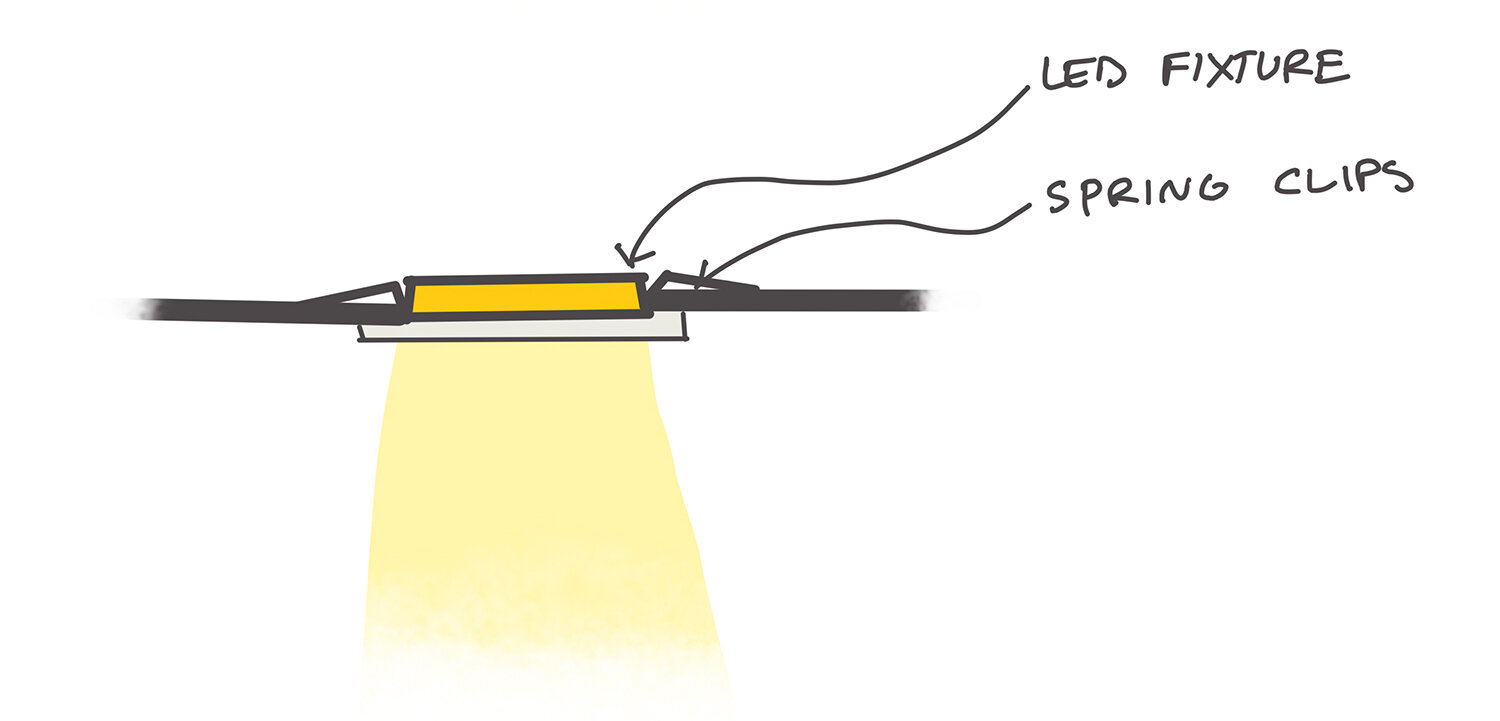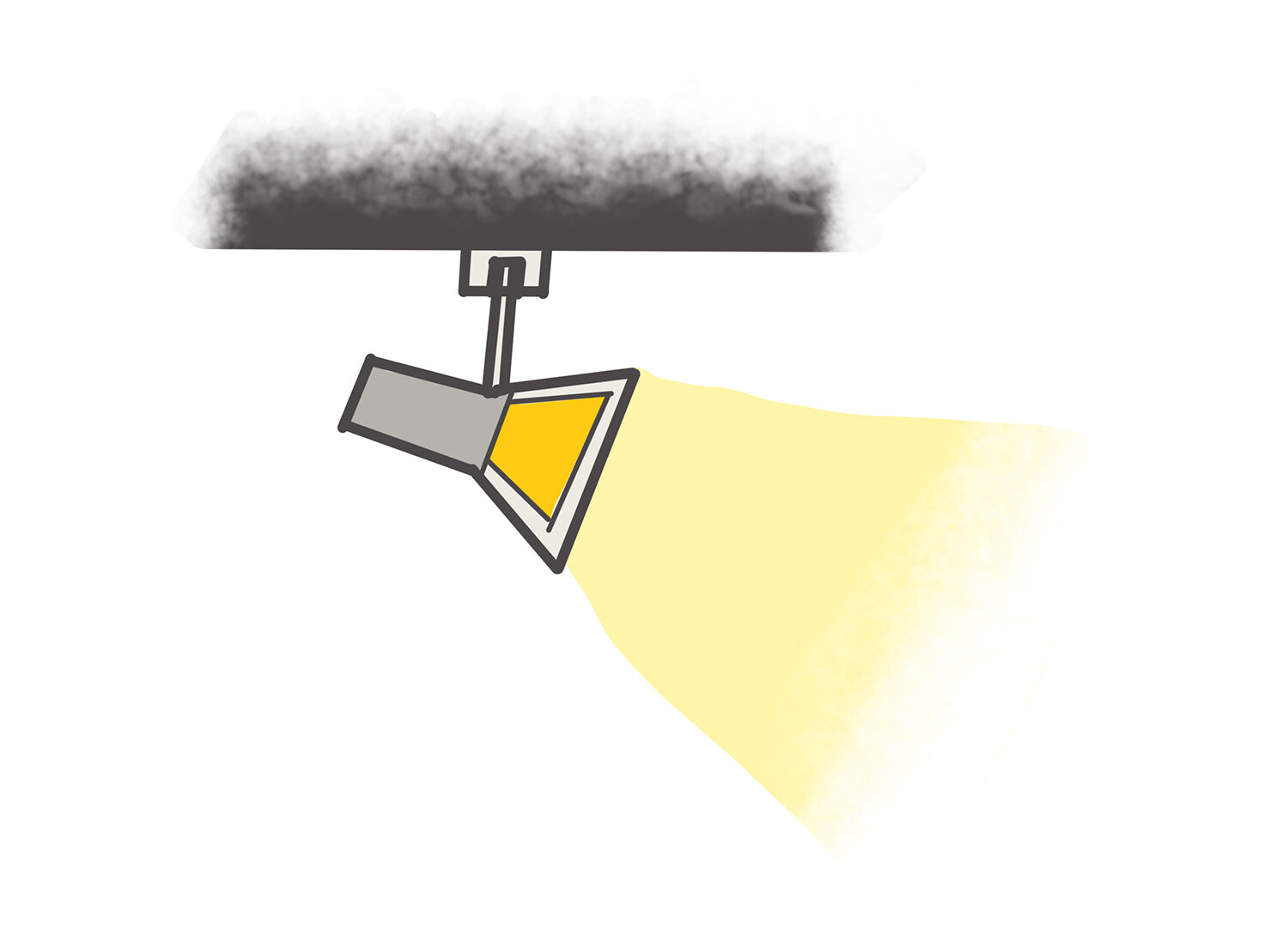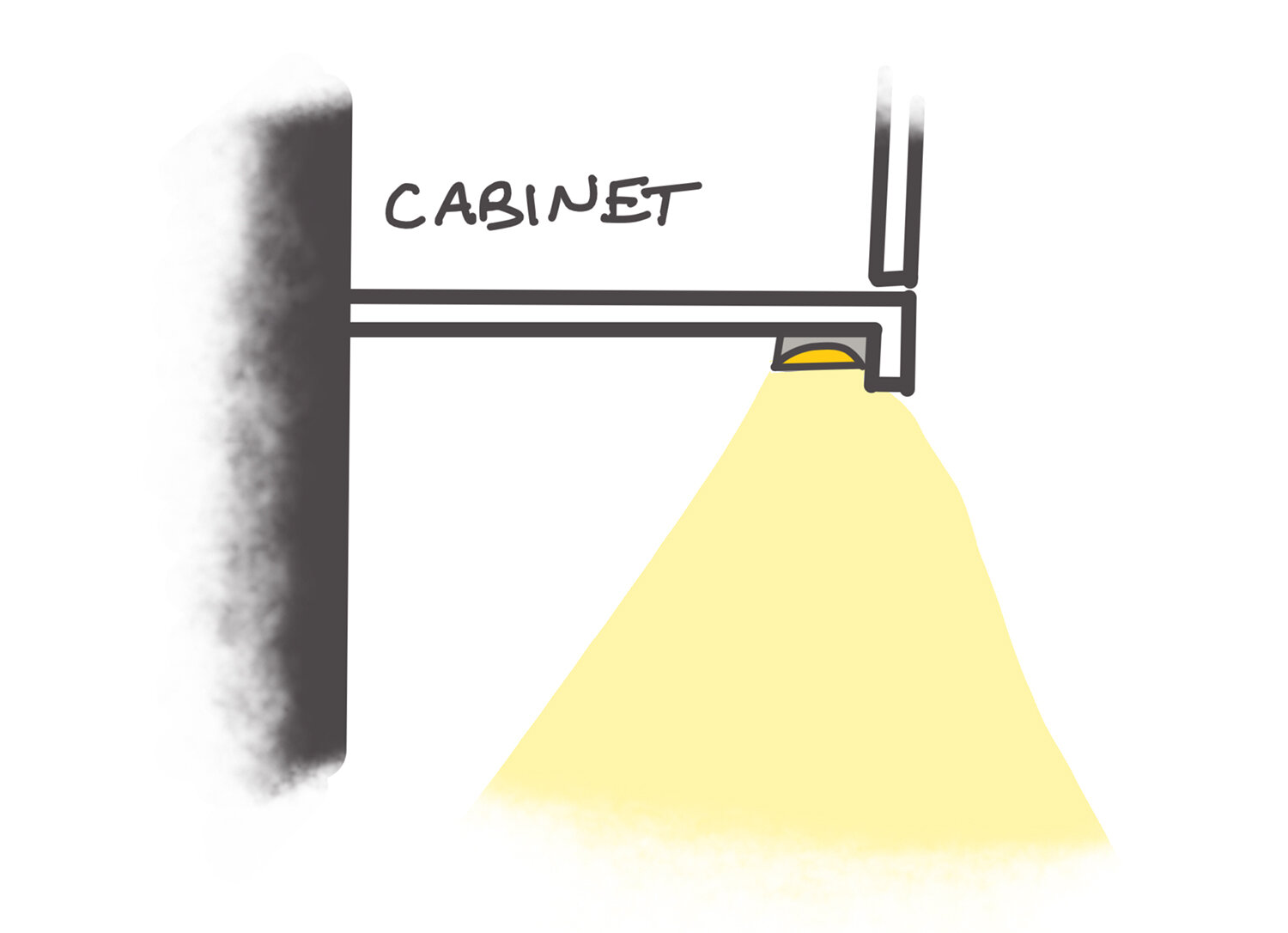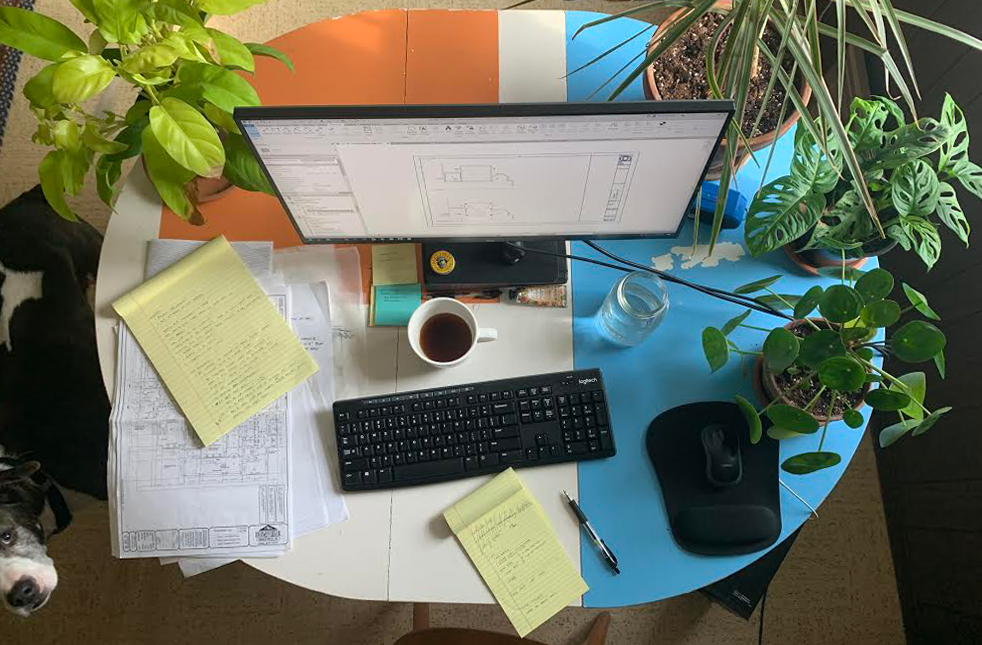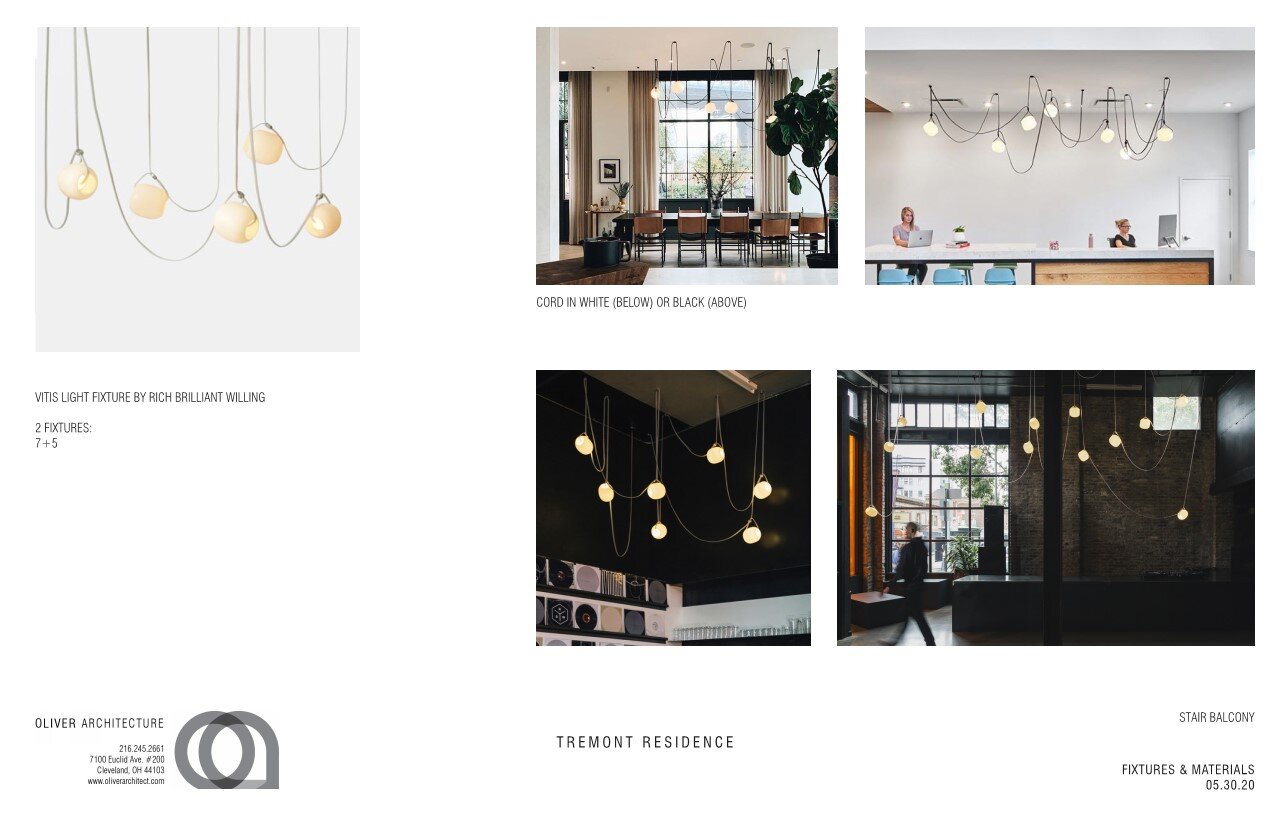How an Architecture Project Begins
You may have wondered ‘What does an architect actually do?” Architecture projects can be broken into five phases that represent the basic services that architect’s provide. For a cursory overview of these phases check out this previous blog post. In this blog post we’re going to explore the initial phase - schematic design - in more depth.
At the end of the schematic design phase there will be a general layout for the project that has approval from the local zoning authorities. To reach this end our office conducts a code review, works on space planning with the client, and applies for preliminary plan approval from the local zoning department.
If the project is new construction our office begins by analyzing the parcel information and the local zoning code. The zoning code contains regulations such as allowable building uses in zoning districts, required site setbacks for buildings or parking lots, parking space requirements, landscape requirements, and building signage requirements. Our office begins drawings for the project by folding the code information into a site plan drawing. We then know how much usable space a site has and we can begin to lay out the building and site elements.
If a project is a renovation or a tenant build out of an existing building there is less initial work to do. We begin by creating a drawing of the existing space using previous architectural drawings and/or measuring the existing space. The local code review will still occur but there are fewer things applicable to a project that is not new construction.
At the end of the schematic design phase there will be a general layout for the project that has approval from the local zoning authorities. To reach this end our office conducts a code review, works on space planning with the client, and applies for preliminary plan approval from the local zoning department.
If the project is new construction our office begins by analyzing the parcel information and the local zoning code. Some common regulations included in the local code that are of interest to an architecture project are allowable building uses in zoning districts, required site setbacks for buildings or parking lots, parking space requirements, landscape requirements, and building signage requirements. Our office folds this information into a site plan drawing and then begins to lay out the building and site elements.
Schematic Plan - Color Coded by Use
If a project is a renovation or a tenant build out of an existing building there is less initial work that needs to happen. We begin by creating a drawing of the existing space using previous architectural drawings and/or measuring the existing space. The local code review will still occur but there are fewer things that are applicable when the project is not new construction.
The next step is to create a floor plan for the new space. We start by talking with the client to determine how they need the space to work for them. Our office will then create a floor plan and send it to the client for comments. For a new construction project we will usually draw elevations of the building at this point as well. These drawings are then shared with the client and we ask for feedback. We then make changes and send it back. The drawings are worked in this manner until everything is perfect and the client approves it.
Once we have the initial drawings finalized the next step is to submit the drawings to the local zoning authority for a plan review. However, for new construction projects there is an extra step before that happens. We usually need to bring in a civil engineer. Civil engineers specialize in the physical environment and create drawings that show how the land will be altered by the new building.
The plan review process varies by city. It might be as simple as submitting drawings for review or there may be required meetings before anything can be submitted. The amount of time it takes to get a response also varies, but most cities or townships will respond within a month.
We usually have a good idea that the drawings will be approved or at least there won’t be any major changes. While waiting for the plan review we begin to work on the next phase of the project - design development.
We have an ongoing blog series that follows a tenant build out project from start to finish. Check it out to learn more about how a project tends to progress.
Fund That Flip 05 - Construction Progress
Last year we had the pleasure of designing Fund That Flip’s Cleveland office. They quickly outgrew that office and started looking for a new, larger space. They asked our office to help them design the new office and we started a blog series to follow the project from start to finish. This is the fifth part in our blog series - check out the other posts here!
The images below are in chronological order and were taken at site visits in May, June, and July 2020.
Fund That Flip Project Profile Blog Series
Check out the previous posts in this blog series.
Common Types of Light Fixtures
Whether you’re designing a new space or looking to update your home light fixtures are a vital part of the process. This list of the common types of light fixtures will explain how each type of fixture works and the best way to utilize them.
Indirect vs. Direct Lighting
It’s important to note the difference between indirect and direct lighting. Direct lighting provides downward light and indirect lighting provides upward light. Direct lighting is light that comes directly from a fixture and lights a specific area. This type of lighting is used in areas like the kitchen or bathroom where you need light to be bright enough to see what you’re working on. Indirect lighting is also known as ambient or general lighting. Indirect lights are generally lower intensity lights that cover a large area and rely on the light bouncing off of the ceiling or walls to illuminate the space.
Cove
Cove lights are a type of indirect light that can be installed in ceilings or walls. Cove lights provide a wash of light along the wall or ceiling they are open to. Lighting can make a room seem larger or smaller depending on how it’s used. When parts of a room are in shadow it makes the space feel smaller. Cove lights running along one wall or around the ceiling help provide light to all areas of the space which helps it to feel larger.
Pendant
There are many styles of pendant lights and while they are most often sources of direct light they may also provide indirect light. Glass shades will provide diffuse light that can make a room feel larger while an opaque shade will provide direct downward light that is best used for a focal spot in the room.
Surface
Surface lights are lights that are installed on the surface of a wall or ceiling. This type of fixture is most commonly used as direct overhead lighting. Surface lights tend to provide a lot of light over a larger area—good for areas like utility rooms, closets, or garages.
Recessed
Recessed lighting is a ceiling mounted direct lighting fixture. These lights can be used for everything from task lighting to general lighting. With traditional can fixtures there are softening baffles or reflective trim options that can be used. Baffles work best in spaces with low ceilings or where a cozier feeling is desired. A reflective trim that increases the light output from the fixture is most appropriate for kitchens and areas where brighter light is required. LED recessed fixtures are smaller and easier to install. Most models also have an option to select the color temperature of the light. A soft, warmer light makes a space feel cozy and is almost always appropriate for a residential setting. Stay away from “daylight” color LED fixtures since they can be a bit abrasive.
Sconce
Sconces are a wall-mounted decorative type of indirect fixture. These fixtures shine light on the wall and provide general lighting for a room. Fixtures with upwards light can make the room feel larger - those with downward light can make a space.
Track lighting
Track lighting is a type of direct light fixture that features directional lights that can move along a track. Track lights can be used as general downlight in a space or they can be oriented to highlight particular aspects of a room.
Under Cabinet
Under cabinet lighting is a specialty fixture that provides direct lighting under the upper cabinets in a kitchen. These fixtures provide extra lighting at countertops where it can be helpful while working in the kitchen.
Why You Need House Plants
My work from home setup when the COVID-19 quarantine started.
I love house plants and believe everyone can benefit by having a few more house plants in their life. In this post I’m going to try and convince you to get some plants. I’ve kept a lot of plants over the past couple of years - check out some pictures of my collection below!
Why You Need Plants
Science says you do. The NASA Clean Air Study was conducted in 1989 and showed that some of the most popular house plants are capable of filtering pollutants out of the air. Not only do plants release oxygen into a space but they help clean the air as well. This Forbes article details some of the scientific studies that show house plants can be beneficial for people. Studies have shown that plants can reduce stress and anxiety and even enhance cognitive skills!
Caring for something. One of my favorite parts of keeping plants is watching them grow. It feels good to know you have provided something with everything it needs to thrive.
Add texture and visual interest to a space. This is an architecture firm’s blog so I feel obliged to mention the design aspect to plants. Natural elements also help soften the rigid nature of the built environment. A few well-placed house plants provide a new texture and add visual interest to any space.
The first picture I have of my plant collection. I think two of these plants are still alive.
How to Keep Plants Alive
Choose easy plants. Last week we made a blog post of five easy to care for plants. These plants are forgiving to lapses in care and adapt to the indoor environment well. Check out the post here!
Research. I’ve never found it too difficult to keep plants because of the amount of information available only. Once you know what a plant needs all you have to do is provide them with it.
Consistency. Consistency in care is also important for plant care. I have to confess I’ve slipped up many times and killed quite a few plants - but most of that could have been avoided had I kept up properly caring for them.
Words of Caution
Toxicity. Some plants are toxic to humans and animals. Make sure you research new plants to see if you need to keep them out of reach of children and pets. I’m lucky my cat only occasionally eats plants but I still have to keep some plants away from her.
Plants are addictive. I started with one plant. Now I have too many. House plants can be a little addictive - be careful if you choose to enter this world!
5 Easy To Care For House Plants
We put together a list of some easy house plants. Everyone needs more plants!
Most of my plants.
I love house plants. My obsession began about 3 years ago and since then I’ve kept quite a few plants. It hasn’t been always been easy though - due to multiple moves and less than perfect care at times I’ve lost more than a few. My collection currently sits at around 50 plants (and always growing). I may have a problem but I truly believe everyone should have more house plants!
I put together a list of five of the easiest plants I’ve had personal experience with.
Snake Plants
Snake plants are a great beginner plant. They are drought tolerant and very forgiving about irregular watering. I accidentally neglected a small snake plant for a few months at the office and once I began watering it again it produced a couple new plants called pups! They like bright light and prefer a pot that allows the root system to become crowded.
My little snake plant with a couple of pups.
Some snake plant varieties can grow up to 2’ - 3’ tall. Photo by Paul Hanaoka on Unsplash
Pothos
Pothos plants are also known as Devil’s Ivy. These plants form have long trailing stems that look amazing hanging down from a high shelf or on a bookcase. These plants can handle all levels of light but grow fastest in bright light. Pothos can be planted in soil but can also be kept in water which makes them super easy to care for. There are many different varieties of pothos with different levels of variegated leaves.
My pothos plants. I keep the plant on the right in a glass of water that I change out weekly.
ZZ Plant
I have a confession. I’ve never actually kept a ZZ plant. I decided to include it here because of my mother’s success with it. She has a notorious black thumb but I had heard how easy this plant was to care for and gave her one. It’s been alive for a couple years now. This plant grows from thick rhizomes that look like potatoes. These rhizomes hold water and make the plant very forgiving with irregular watering. ZZ plants also filter toxins out of the air and improve air quality. One drawback is that all parts of the plant are poisonous - make sure to keep it out of reach of curious children and pets.
Jade
Succulents are allegedly some of the easiest plants to keep but I never have any luck with them. My excuse is that Cleveland (ranked as the 23rd least sunny city in the US) doesn’t get enough sun to keep them happy and it has nothing to do with me personally. These plants want as much light as possible and water only when the top inch or two of soil dries out. They let you know they aren’t getting enough water when the leaves begin to shrivel - but tend to bounce back quickly with regular watering. The stems of jade plant turn woody with age.
Peperomia
Peperomias are easy for some of the same reasons as Jade plants. These plants have thick, succulent leaves that tolerate irregular watering pretty well. In fact it’s better for these plants to have too little water than too much. Peperomias are slow growing which means they won’t need to be re-potted for years which helps make them a low maintenance house plant. These plants come in a few different colors and varieties with different textures.
These are just a couple of my favorite easy to care for plants. Almost any plant can be “easy” as long as you understand its care requirements. There is a ton of information on the internet about the care requirements for different plants. I find myself looking up plant care information just about every week. As long as you do your research and provide the plant with the care it needs you should have pretty good luck!
Tremont Residence: Construction Administration
Construction recently began on this residence in the Tremont neighborhood of Cleveland that our office has been designing. Check out this previous blog post with some pictures of the construction process.
Construction of the Tremont residence
Before construction starts the architect’s office is busy creating construction documents and applying for permits, but once construction begins the architect’s office shifts into construction administration. The contractor is responsible for constructing the building as designed in the construction documents and the architect’s office works on construction administration items to this end. Construction administration involves responding to requests for information, issuing sketches to clarify the drawings, and working with the owner and contractor to keep the project on track.
Requests for Information (RFIs)
RFIs are the formal process for the architect to ask questions about the project. Sometimes the architect’s intent in the construction documents is unclear or unforeseen things arise in the construction process that require a solution. RFIs can refer to any aspect of the project. For this residence we have received RFIs for everything from confirming the contractor’s scope of work to what type of structural connection needs to be made at beams.
Sketches
Sketches are issued by the architect when changes to the construction documents occur. The sketches above show some of the changes that have been made to the project. The first sketch shows changes to the front door of the residence. The door’s size was revised and a metal cladding material was added to the exterior side. The next three sketches show changes that were made to the master bathroom. Some of the things that changed include the addition of a second shower head and additional electrical work to install a shower controller.
Material selection
One major difference between commercial and residential projects are the materials used. Residential projects tend to use more personalized and higher quality materials than commercial projects do. The material selections for this residence have been in progress for a while. We’ve been working with the client to get the design exactly where they want it. Check out some pages from a recent material presentation below. We love all the textures from the wood grain, stone, and handmade tile.
Fund That Flip 04 - Construction Administration
This is the fourth post in our blog series following a project from start to finish. Check out the other posts here!
Sneak peek of the Fund That Flip demolition.
Construction can begin after the permit set has been reviewed and a permit is issued. The contractor selected by the client is responsible for building the project. However, architects are still involved in the construction process. During construction architects work on construction administration. This includes submittals, sketches, and site meetings.
Site Meetings
Regular site meetings with the owner, architect, and contractor help to overcome issues that arise during construction and allows everyone see the construction progress. Our office issues meeting notes after these site meetings to document the discussion.
Submittals
The construction documents specify products that the architect has selected. Submittals are generated by the contractor before purchasing items for the job. Most items and materials included in the project will have a submittal. Some examples would be doors, casework, ceiling tiles, paint, bathroom accessories, and HVAC equipment. Submittals are then given to the architect to review and either approve or reject it.
The image below is a page from the ceiling tile submittal for Fund That Flip. The type and size of the tile is indicated on product data sheets which our office then reviews and issues a response.
Sketches
Sketches are used to clarify or change things in the construction documents. Major project changes will be issued as addendums (see our construction document blog post for more information). Smaller changes will often be issues as sketches. These sketches are provided to the contractor by the architect’s office.
The sketch on the right was issued after furniture was selected for Fund That Flip. The table selected for this room was wall mounted so we needed to let the contractor know to provide extra wall support for it.
Fund That Flip Project Profile
Check out the other posts in this blog series.
We have previously posted about the first steps of a project,
the design phase, and construction documents.
Construction Update: Tremont Residence
We’ve been working on a residence in the Tremont neighborhood of Cleveland for a couple years now. Last year we made this blog post detailing the design process of the home and describing how it has changed over time.
Construction began earlier this year and we couldn’t wait to share some the progress. Check out some of the pictures Nick from the office has taken during the construction process!
All About Windows
Windows are an important part of every building and we put together this guide to explain them.
There are three main elements of windows that are important for anyone looking to buy windows: type, material, and glazing
Types of windows and how they operate
01 TYPE
These are the most common types of windows on the market today. Each type operates a bit differently.
Single Hung - Single hung models have an operable bottom sash that allows air flow into the space.
Double Hung - Both the top and bottom sashes move on double hung windows.
Casement - Casement windows open along the edge of the window - the other edge is hinged. The window is opened and closed using a hand crank on the interior side.
Awning - The window sash opens at the bottom of the window with a hinge along the top edge.
Sliding - Sliding windows open horizontally. One or both of the sashes can be operable on this window type.
Fixed - Like the name suggests - this type of window does not open.
The type of window used plays a role in a home’s energy efficiency. It takes more energy to heat and cool a space if outside air is actively leaking inside. Any window that opens has the potential to leak. Due to this fact, fixed windows are the most energy efficient. Casement and awning windows seal pretty well. The sliding mechanism on the other types of windows tends to allow more air through. This becomes more important if extreme wind and weather conditions are common at the building location - most of the time a quality sliding window type will be fine.
02 MATERIAL
Windows are being made out of many different materials these days. Below we will explain some of the most popular materials used and their relative benefits.
Wood
Wood windows offer the best insulating properties of the different window materials discussed here. They are also considered to be the most beautiful type. They require more upkeep than the other materials and are the most expensive option.
Vinyl
Vinyl is less expensive than the other options here but window manufacturers offer different grades of vinyl windows. Higher grades are recommended as lower grades tend to leak more air. Premium grade vinyl windows can end up being expensive.
Fiberglass
Fiberglass is more expensive than vinyl but less expensive than wood. It is stronger, more energy efficient, and more durable than vinyl.
Aluminum
Aluminum is lightweight and stronger than other options but allows for a lot of heat transfer. The other window materials offer far better insulation. Aluminum will sometimes be used as a cladding material with wood underneath. This does help to insulate the window but water tends to get behind the aluminum and cause the wood to rot.
03 GLAZING
There are a few ways to increase the energy efficiency of a window through it’s glass construction. Insulation can be added with multiple-pane windows and there are coatings that decrease heat transfer.
Number of Panes
Windows can have multiple layers of glass. Double-pane and triple-pane windows have air or gas sealed between the panes which helps by adding insulation to the glass. If the seal is broken, however, condensation can form between the panes. There is also a definite cost increase when multiple panes are used.
Low-E Glass
Low-E stands for low emissivity. This is a very thin coating applied to the glass that allows light through but reflects heat. This coating keeps heat from passing through the window making it useful in all seasons.
Windows are also tested for their energy efficiency. These measurements will be available to anyone shopping for windows. Two of these values are the solar heat gain coeffient (SHGC) and U-value.
SHGC (Solar Head Gain Coefficient)
This value indicates the amount of energy from the sun that passes through the window assembly. A higher SHGC allows more heat from the sun through. A lower value is more energy efficient.
U-Value
The U-value is the rate at which heat moves through the window. A lower value indicates a more insulated window.
EnergyStar has recommended values for the SHGC and U-value based on location. Check it out here.
What's Oliver Architecture Watching?
We’ve been stuck inside for a couple weeks now - read about the TV shows we’ve been enjoying!
Ohio has been under a stay-at-home order due to COVID-19 and we’ve found ourselves watching a good amount of television. We asked everyone in the office what they’ve been watching - check out their answers if you’re looking for something new!
Jon’s been watching The Office and listening to Office Ladies.
If you’re anything like me you’ve watched The Office all the way through multiple times. Jenna Fischer and Angela Kinsey, Pam and Angela on the show, recently started the Office Ladies podcast. On this podcast they re-watch each episode of the show and tell behind the scenes stories. I’ve been listening to an episode of the podcast then watching the show to notice all the details they talk about. The Office is streaming on Netflix and Office Ladies is from the Earwolf podcast network
Zoë’s been watching Little Fires Everywhere!
It’s based on the best-selling novel by Celeste Ng. It’s set in Shaker Heights (near Cleveland where our office is located), which is also where the author grew up. The show stars Kerry Washington and Reese Witherspoon and deals with themes of family/motherhood, racial dynamics, friendship, and order. Little Fires Everywhere is on Hulu and there’s a new episode every Wednesday night.
Mary Kate’s been watching Top Chef and Too Cute!
I watch a lot of reality competition shows, and Top Chef feels like the classiest of the bunch. I have never tried a ceviche in my life, but I feel qualified to judge one after watching 16 seasons of this show. Secondly, Too Cute follows a litter of puppies or kittens from when they are a few days old until they are adopted. It is great to put on in the background to lower my heart rate and blood pressure as I am doing something else. Plus, a narrator describes each little pup or kitten’s personality, very cute indeed! Both shows have multiple seasons available on Hulu.
Nathan’s been watching Kim’s Convenience!
Zoë turned me onto this show by picking it for her birthday Netflix Party. It’s an hilarious sitcom set in Toronto around a Korean-Canadian family who own and operate a small store in the city. It’s got everything you want from a solid sitcom: dramatic irony, family disagreements, and an infuriating “will-they-won’t they.” The amazing performances and character development bring it all together! You can binge 4 seasons of Kim’s Convenience on Netflix.
Nick’s been watching Jack Ryan.
John Krasinski plays the role of a CIA analyst working with multiple governments to apprehend the leader of one of the largest terrorist organizations in the world. This is a show that doesn't shy away from intimately showing the human side and moral dilemmas of a macro scale of countries to the micro scale of individuals. It's emotionally heavy and in tune with the horrific facets of the world in a contemporary light. I appreciate that no character or group is demonized and each has a compelling backstory to their actions. I was interested in seeing John Krasinski's other acting roles after watching him in The Office and the film 13 Hours. You can watch on Hulu or Amazon Prime Video.
Kevin’s been watching Formula 1: Drive To Survive.
This is a Netflix original program that follows the previous year’s Formula 1 racing teams as they move through the season. I can’t claim to have a great knowledge about the sport and/or the cars, but I can’t get enough of watching teams comprised of hundreds of people working towards making two cars run a race as fast as possible. Even with all of the custom technology, almost endless budgets, and cream-of-the crop drivers, it seems like catastrophic failure is constantly just around the corner. The majority of the teams do this knowing that they will never compete with Mercedes and Ferrari. For them, a 5th place finish in a race is a huge victory.
One criticism I have is that the voice-over during the show is meant to sound like an actual race announcer—I’m pretty certain that it’s not commentary from any actual race, but was recorded specifically for the show to, you know, advance the narrative a bit.














